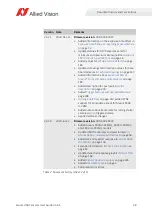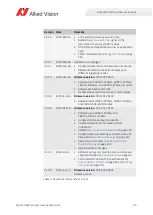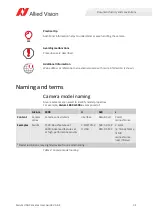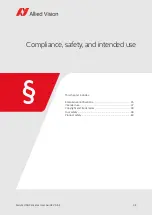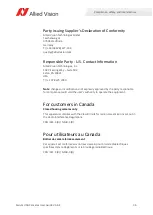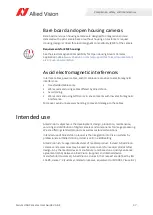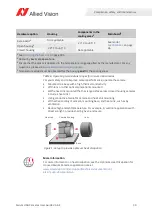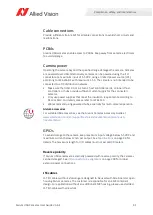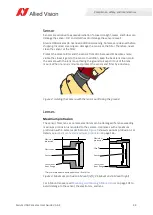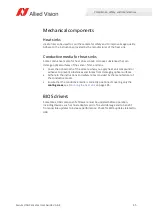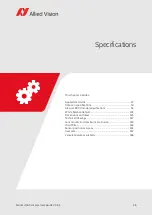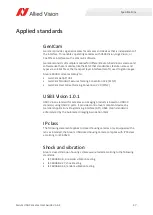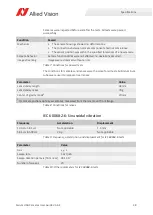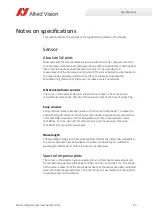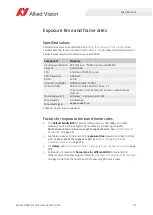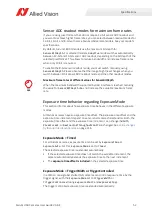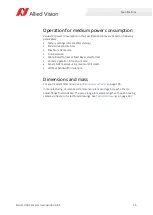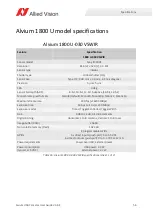
41
Alvium USB Cameras User Guide V3.6.4
Compliance, safety, and intended use
Cable connections
Provide sufficient strain relief for all cable connections to avoid short circuits and
malfunctions.
PCBAs
Alvium USB cameras enable access to PCBAs. Keep away from camera electronics
to avoid damage.
Camera power
Operating the camera beyond the specified range damages the camera. Cameras
are powered over USB. Alternatively, cameras can be powered using the I/O
connector at a maximum input of 5.5 VDC, using a limited power source (LPS),
according to IEC 62368-1 with maximum 1.5 A. The camera is not intended to be
connected to a DC distribution network.
• Make sure that USB 3.0 or 3.1 Gen 1 host controller cards, on-board host
controllers, or hubs provide sufficient current supply for the connected
cameras.
• Only use power supplies that meet the insulation requirement according to
PELV or SELV. For details, please refer to IEC 61140.
• We recommend using powered hubs, especially for multi-camera operation.
GPIOs
To avoid damage to the camera, keep maximum input voltage below 5.5 VDC and
maximum current below 12 mA per output. See
on page 46 for
details. The maximum length for I/O cables must not exceed 30 meters.
Reverse polarity
If Alvium USB cameras are externally powered with reverse polarity, the cameras
can be damaged. See
on page 200 for proper
external power connections.
JST-cables
JST I/O cables without shielding are designed to be used with bare board or open
housing Alvium cameras. The customer is responsible for an EMC compliant
design. For applications without an additional EMC housing, please use shielded
JST I/O cables with screw lock.
Alvium accessories
For suitable USB accessories, see the Alvium Cameras Accessory Guide at
www.alliedvision.com/en/support/technical-documentation/alvium-usb-
.
i


